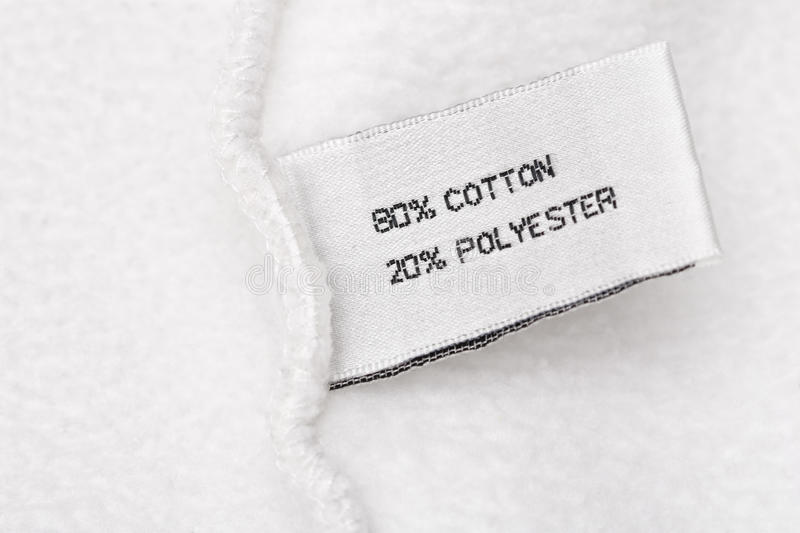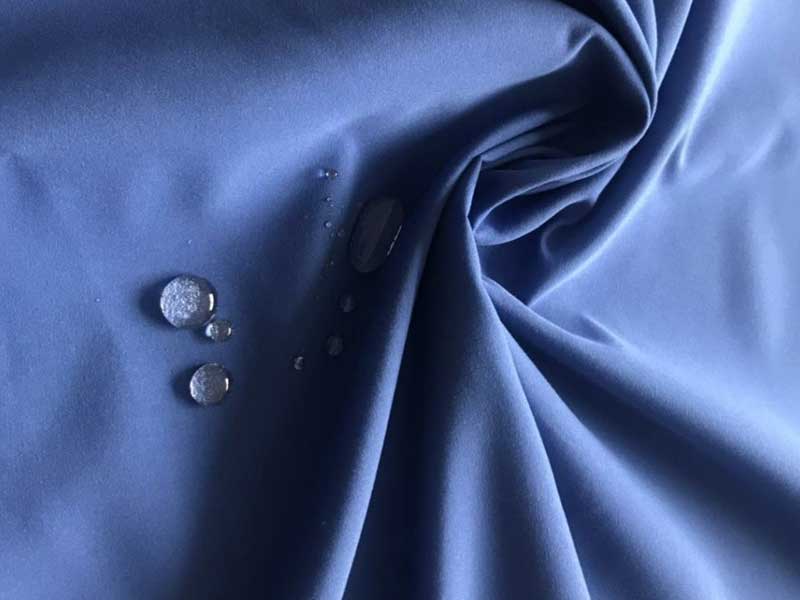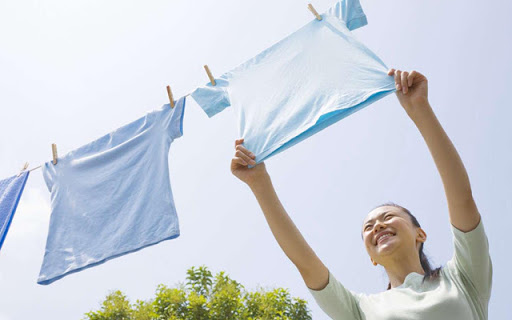
Selling guide - Jun 12, 2023
What is Polyester made of?
Polyester is a relatively new fabric created in 1941, but today’s polyester has come a long way since then. It is an entirely man-made fabric and contrary to popular belief, can be soft and stretchy. This synthetic fabric forms through a process called polymerization, which combines an acid and a type of alcohol into a polymer, or plastic. This plastic then undergoes a manufacturing process to shape it into pellets. After a melting period, the plastic extrudes out of a fancy nozzle and solidifies into threads. Depending on what style of cloth the manufacturer wants, the thread can either be woven by itself into 100% polyester material or blended with fibers from another kind of material to create a blended material. Though this sounds like a complex process, manufacturing polyester actually costs far less than growing and processing a natural material like cotton. The low cost of production has catapulted polyester into the fast lane of fashion. Today, roughly 60% of all off-the-rack clothes sold around the world contain polyester.
Polyester is known for its versatility, durability, water resistance, flame resistance, and ability to hold its shape. Home furnishings like upholstered furniture and curtains often sport extra-durable polyester material because it holds up so well over time. Outdoor gear like tents and umbrellas often contain polyester as well, for the same reasons. Its versatility makes polyester a great material for many different kinds of clothing. If you check the labels of the clothes you are wearing right now, you will very likely discover that they contain some polyester! The garment industry uses polyester heavily in types of clothing like t-shirts, athletic wear, and swimwear.
Is 100% polyester stretchy?
The stretchiness of polyester depends on the construction of the material. For this reason, some kinds of 100% polyester will stretch more than others.To give you a quick mental image of how this works, picture a coil of stiff rope. On its own, the rope doesn’t stretch at all. However, if a talented fisherman knots that rope into a fishing net, the net will have a stretchy, giving weave!
The construction of the fabric, rather than the nature of the fibers, really determines the stretch of the material. There are many types of polyesters, each having unique characteristics. Polyester filaments vary in shape, and those filaments can be spun into yarns in different ways. Each of these factors can determine how stretchy the polyester will be. When polyester yarn is knitted (or woven) into the fabric, it results in materials with different amounts of stretch. Therefore, if polyester is blended with stretchy fibers such as spandex or rayon, it will also affect how stretchy the polyester will be.
Polyester Stretch Levels
| Low Stretch | Medium Stretch | High Stretch | |
| 100% Polyester | x | ||
| Cotton-Poly blends | x | ||
| Polyester Microfiber | x | ||
| Woven Polyester | x | ||
| Knitted Polyester | x | ||
| Polyester/Rayon/Spandex blends | x | ||
| Waterproof Polyester | x |

Polyester blend: How stretchy are they?
Whether or not a poly blend stretch depends on the characteristics of the additional fabric. Some poly blends stretch like a rubber band; others don’t stretch at all. You probably remember that polyester material can stretch a bit on its own, depending on the construction of the cloth. Most of the time, though, manufacturers blend polyester with another kind of fiber to achieve a high level of elasticity. Some of the most popular poly blends include polyester and spandex (by far the stretchiest of all the blends), poly-cotton, and polyester and rayon.
Polyester and Spandex
Polyester and spandex blended form a tough, durable, and incredibly stretchy cloth commonly used in sportswear and leggings, among other things. You may also see spandex referred to as elastane. Technically, spandex is a particular brand of elastane, which is the general term for this super-elastic type of synthetic material. Spandex is another popular synthetic cloth, known for its extreme elasticity. Many synthetic materials undergo a similar manufacturing process, though each one is made from slightly different chemicals.
Spandex, for example, gets its start in life as a polymer called polyurethane. This polymer has a long and very stretchy structure. If you check the manufacturer’s label inside a piece of clothing, you will see the fabric content listed. This will give you a good indication of how stretchy the clothing will be. For example, a workout tank top made with 20% spandex will have a lot of stretch in it, while a tank made with only 5% spandex will fit comfortably but won’t stretch nearly as much. The most common poly-spandex blend proportions are 95% polyester and 5% spandex, 80% polyester and 20% spandex, and 92% Polyester and 8% spandex.
Polyester and Cotton
Polycotton blends synthetic polyester fibers with natural cotton fibers. Some people love this material for its breathable, sturdy, comfortable feel. Like poly-spandex, polycotton comes in a variety of percentages. An equal amount of both fibers sometimes called a 50/50 blend, sells very well in t-shirts. Another popular blend features 65% cotton and 35% polyester. Polycotton shows up most prevalently in the t-shirt arena, though many people like it in other comfortable clothing such as leggings and sweatshirts as well. However, some people dislike the fact that polycotton production costs a lot, because of the cost of growing and processing cotton. They also complain that because of its synthetic and natural composition, polycotton tends to pill badly over time.
Polyester and Rayon
You won’t see this blend as often as something like polycotton, but it has a smooth, soft quality that makes it perfect for some kinds of clothing. Rayon feels light and silky, despite the fact that it is made out of wood pulp! People disagree about whether or not rayon is truly synthetic since it is derived from a natural source but undergoes a lot of processing to become cloth. Rayon brings a lovely soft, lightweight quality to a polyester blend. You will find this blend most often in garments light dresses and blouses.
Clothes made from polyester
Clothes made with polyester don’t absorb sweat, but they do a fantastic job of wicking sweat away. Most activewear, performance wear and anything waterproof (like raincoats, winter coats and hiking pants) contain polyester. Jersey knit items (like tee shirt material) often blend polyester and cotton. Polyester blends are an excellent choice for underwear and many types of shirts.
Undershirts
Choose a poly-cotton blend undershirt for its stretchiness and comfort, coupled with cotton’s moisture-wicking properties to stay cool and dry under your clothes. When blended with other fibers, polyester produces soft, stretchy, moisture-wicking material that keeps you dry and comfortable. As such, it can be an excellent choice for those looking for fast-drying underwear or undershirt
Criss cross tanktop
Unisex tanktop
3D women tanktop
Underwear
Looking for underwear that fits like a dream while keeping the boys in check? Choosing underwear in a poly-spandex blend helps prevent riding up and wedgies, along with providing extra breathability and comfort.
Sport bra
Dress Shirts
Since polyester doesn’t shrink and dries fast, it can be a smart choice for performance dress shirts or polos. In addition, when blended with spandex/Lycra it can add a great deal of stretch, making your performance dress shirt or polo fit and feel great.
Women sleeveless polo dress
Tshirt dress
Athleisure Wear
For athleisure wear, it’s usually better to avoid 100% polyester since polyester repels water and can sometimes leave you feeling clammy. Poly-cotton blends are best for casual or athleisure wear. Cotton absorbs sweat and moisture and retains it in the garment, taking longer to dry. So if you’re wearing polyester-blended workout clothes, you’re likely to feel dry and comfortable.
Women sleeveless polo
Polo shirt
Legging
Outerwear
Outerwear is where 100% polyester shines. Pure polyester is water-repellent, windproof and lightweight, perfect for jackets you can stash in a backpack for easy carrying. For general or athleisure wear, it’s usually better to avoid 100% polyester since polyester repels water and can sometimes leave you feeling clammy.
Women gile jacket
Windbreaker jacket
Pros of Wearing Polyester
- Polyester is hydrophobic, meaning water-repelling, making it less likely to absorb stains than other fabrics.
- Polyester dries quickly.
- Polyester is super stretchy and very strong. Polyester clothes tend to hold up to everyday wear and tear much better than cotton garments.
- Polyester is wrinkle-resistant. Polyester bounces back to its original shape instead of creasing. This makes it the perfect fabric for undershirts that need to fit smoothly against your skin under other shirts.
- Polyester blends easily with other fabrics. So, while a typical shirt made of 100% polyester will be stretchy and warm, a shirt made with a 50-50 blend of polyester and cotton will retain the good qualities of both fabrics.
- Polyester fabrics are durable and resistant to most chemicals and shrinking. Polyester is also mildew and abrasion-resistant.

Cons of Wearing Polyester
- Polyester is generally not a breathable fabric. When you wear a shirt or outfit made from 100% polyester, there is a possibility that you’ll be sweating uncomfortably the end of the day. There are some exceptions, of course. If you’re planning to buy something that is 100% polyester, do a breathability test first if possible.
- Many believe that polyester is not environmentally friendly. There is some truth to this because polyester will never disintegrate within a landfill. However, polyester clothing can be donated, re-sold or upcycled, so it is “green” in that sense.
- Polyester is a flammable material, but the fabric is usually treated with fireproofing additives to help counteract this.
- Polyester can be more expensive than natural fabrics because of its costly production process.
How to Care for Polyester Fabrics

As polyester is quite resilient, it can withstand day-to-day wear exceptionally well. However, most items will need to be washed after each wear to extend the life of the fabric properly.Polyester can shrink when it comes in contact with heat, including the hot water cycle in the washing machine, ironing, and in some dryer cycles. Review the tag on the clothing for specific care instructions.
Here is a general guide when washing your polyester-based clothing:
- Set your washing machine to a permanent press setting with cool water, as hot water will shrink polyester garments.
- Use an all-purpose detergent and fabric softener, if necessary, to reduce static cling.
- Tumble dry at a low-temperature setting. You can also use the permanent press setting on your dryer or air dry.
- Press polyester fabrics at a moderate temperature or use steam.
